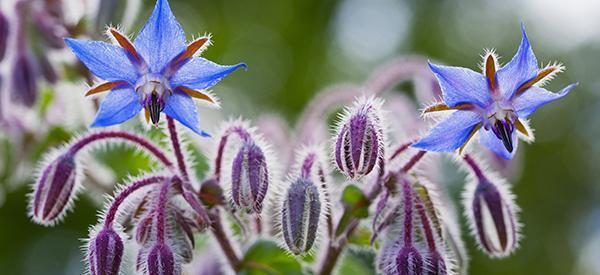
Plant of The Week: Borage
Borage (Borago officinalis), or starflower, is a fuzzy and herbaceous plant that belongs to the forget-me-not family. It bears beautiful star-shaped blue flowers that bloom from summer to late fall. It is called a bee bush or bee bread due to its tendency to attract its main pollinators – the bees and bumblebees. The fresh and young borage leaves are edible and go well in salads, soups, and stews. Its flowers are also eaten and make an excellent addition to sweets and cake decorations. Borage is often marketed globally as an oil extract or herbal food supplement.
Borage is one of the herbs that has deep roots in the history of herbal medicine. The plant was traditionally prescribed as a medicine for depression. The Romans used the borage blossoms as a garnish in wines and summer drinks believing the flowers chase the sadness away. In the Middle East, the plant is widespread in many locations. Up until today, it is undergoing many clinical trials as modern herbal medicine.
Where Borage Is Found
Borage is native to Syria and the Mediterranean regions, as well as in the European countryside. It is growing prolifically in Asia Minor, Europe, South America, and North Africa. This resilient and hardy plant can grow almost everywhere, including in anthropogenic or disturbed habitats. The United Kingdom, Canada, and New Zealand are the largest producers of borage and cultivate it as an oilseed.
Related: The Complete Map of Edible Plants: Find Out What You Have in Your Area! (Video)
How To Identify Borage
When it is in full bloom, borage is easily identifiable by its star-shaped flowers boasting a bright blue hue. It has wrinkled leaves covered with bristly hairs, giving it an overall fuzzy look.
- Leaves. Borage has deciduous leaves with dull green to gray or silver color. They are wrinkled due to their indented veins and are sparsely covered with hairs. These edible leaves are simple, ovate, and arranged alternately in the stem.
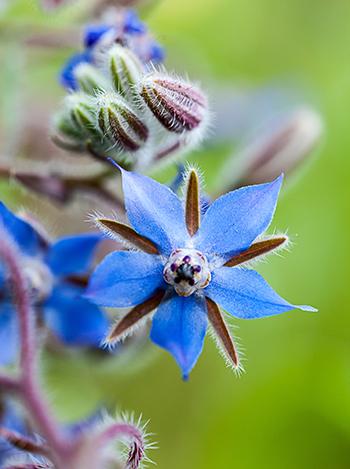 The appearance of the leaves changes as it moves farther up the stem, growing shorter and having shorter petioles.
The appearance of the leaves changes as it moves farther up the stem, growing shorter and having shorter petioles.
- Flowers. The showy blue flower of the borage has cyme inflorescence. It has four to five petals that are fused together at the carpels forming a radially symmetrical star. These petals are thin and delicate, and measure only less than an inch wide. It is used in making blue dye or pink when acid is added.
- Fruits and Seeds. After pollination, the borage flowers will grow tiny fruits about 4 to 5 mm long. It is dry but it does not split open when ripe. Inside it is one or more seeds that are elongated with a rough, light brown skin.
- Roots. Borage has a deep taproot system with drill-like roots that are useful in breaking up the dense soil. It is not an invasive plant, but it is fast-growing and aggressive.
- Stem. Borage is an herbaceous plant that can grow up to 60 cm high. Its stem is erect, hollow, and grooved and is covered with bristly hairs.
Borago officinalis, or the common borage, is the common name for many varieties of the starflower. The other varieties of borage are:
- officinalis variegata or the variegated borage with white-mottled green leaves
- officinalis alba or white borage with intense white bloom instead of blue
- pygmea or the creeping borage is a sprawling plant with pale blue flowers
Related: Plant Identification Guide – 400 Wild Plants That You Can Forage For (Video)
How To Grow Borage
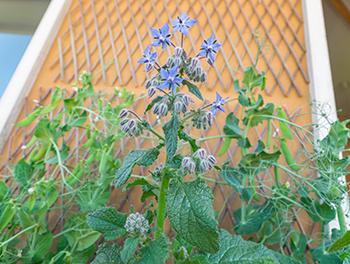 Borage is an annual plant that basks under the benefit of full sun to partial shade.
Borage is an annual plant that basks under the benefit of full sun to partial shade.
They are often found in mountains and coastal areas.
Borage plant thrives in USDA hardiness zones 2 to 11.
The plant may not last through the winter, but it self-seeds and re-grows the following year.
This attractive plant is an excellent addition to the patio, walkway, and small space gardening. Since it is not invasive, it has no problem being planted in the garden. It is also fine if it is planted in a container provided it is frequently watered without getting soggy.
More than its medicinal properties, borage is a boon to gardeners with its ability to attract pollinators. The plant is also an easy grower that can propagate through its seeds. If you have the parent plant, re-potting the volunteer sprouts that grow around it will also work.
Growing Borage from Seeds
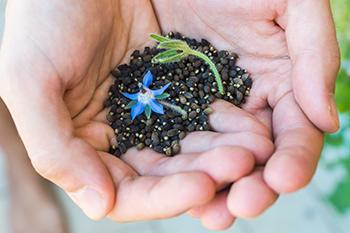 Collect the black borage seeds in spring and store them in airtight containers for sowing when the weather gets warm.
Collect the black borage seeds in spring and store them in airtight containers for sowing when the weather gets warm.
Or you may also buy borage seeds for planting in local herb stores or from online merchants.
The best time for planting borage is in mid-spring after the last frost.
Choose a site with well-drained soil that receives sunlight for at least half a day. If using a container, choose a pot that is about 12 inches deep with drainage holes. Borage does not usually do well when transplanted, so opt for direct sowing if possible.
Sow the seeds in moist soil and cover them lightly at about ¼ to ½ inch of soil. Space them about 6 inches apart by thinning them once the seedlings emerge. Borage will usually germinate from 5 to 15 days when kept at a temperature of 75⁰F.
Propagating Borage from Existing Seedlings
Borage is a self-seeding plant and after it matures, it will also grow seedlings everywhere around it. If you want to transplant these volunteer seedlings, dig them up when they are at least 6 inches tall. Borage seedlings should be young and not root-bound for transplanting. The big roots are vulnerable when dug up and may only wilt when re-potted.
Dig around the borage seedlings, making sure that the roots and soil around them remain intact. Replant the seedlings in the desired spot, digging the same depth as they were previously growing. Water them just enough to moisten the soil and not run soggy.
Related: 10 Plants That You Should Never Plant Together (Video)
Plant Care and Maintenance
Borage is easy to grow and is not prone to pests and diseases. To encourage the plant to bloom, deadhead the flower regularly.
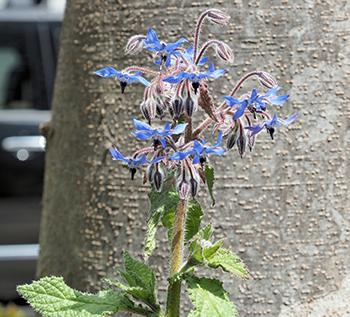
Deadheading will also help the plant re-grow its edible stems for new harvests.
The cultural conditions for growing borage are:
- Full sun to partial shade
- Clay, loam, and sand soil mix
- Good drainage
- Soil pH levels between 6.0 to 8.0
- Regular deadheading
How To Harvest Borage
Both the leaves and the flowers of the borage plant are edible when fresh. Unlike most herbs though, this plant will not taste well when dried. That is why if you want to get the most out of it, growing your borage plant is ideal.
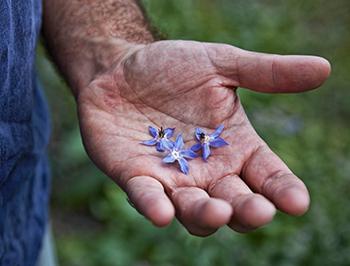 Harvest the young and tender leaves that have lesser hair and use them for various cooking. They are best for food that is boiled and cooked since they are not palatable when raw.
Harvest the young and tender leaves that have lesser hair and use them for various cooking. They are best for food that is boiled and cooked since they are not palatable when raw.
The best addition to salads is the blossoms, which are picked before they fully open. These are also the parts used in making candies and garnish for baked goods. You simply snip them off the plant and discard any brown or withered parts.
For teas and tinctures, the leaves are dried thoroughly and stored for future use. Drying borage should be done away from direct sunlight or drafts. Just spread them out in a tray and leave them in a cool place until they are dry, but still green.
Alternatively, you may also put the tray in the oven under 180⁰F for about 20 minutes or until dry. Store them in a lidded container and keep them away from sunlight and direct heat.
Related: The SHTF Medicinal Garden You Should Have in Your Backyard (Video)
What Is Borage Good For And Natural Remedies Made From It
The starflower is not only valuable for its ornamental and food value. Its main purpose for cultivation is often due to its medicinal properties. It is a potent plant for countering headaches, fevers, and scarlet fever.
Borage is also an effective plant for respiratory issues. Chewing its fresh leaves can relieve a stuffy nose, sore throat, and painful sinuses. It contains compounds that loosen phlegm and mucus to alleviate cough. It may also cure lung infections like pleurisy.
The oil extracted from borage is used to effectively relieve joint and muscle pains. Thus, it is often used as an ingredient for liniments used by athletes and people with arthritis. Its gamma-linolenic compound can increase the regeneration of joints and offers a cure to people with osteoporosis.
For breastfeeding women, borage can increase breast milk flow. It can also prevent breast lumps from developing. Women can benefit from borage if they have menstrual problems like irregular menses and menstrual cramps. For women going through their menopausal period, borage can help relieve hot flashes.
Borage has a sedative property with its high mineral and organic compounds. It makes borage a potent herb for relieving chronic stress and anxiety. Intake of borage strengthens mental health and keeps brain-related diseases at bay.
The emollient property of borage treats various skin conditions from bug bites to psoriasis. It alleviates dryness, itching, and rashes caused by bacterial and fungal infections. It eliminates redness and swelling of the affected area with its anti-inflammatory property.
Another notable effect of borage is in treating a hormone problem called adrenal insufficiency. When this imbalanced hormonal secretion goes untreated, it can lead to Addison’s disease.
Borage is an excellent herb and possesses the following properties:
- Anti-inflammatory

- Diuretic
- Demulcent
- Expectorant
- Galactagogue
- Emollient
- Sedative
- Tonic
In homeopathic treatment, borage is an herb that can treat the following health conditions:
- Respiratory problems
- Skin conditions
- Kidney ailments
- Digestive and bowel problems

- Neurological diseases
- Scarlet fever
- Adrenal imbalance
- Joint problems
- Phlebitis and varicose veins
- Insufficient breast milk
- Menstrual problems
- Mouth and dental troubles
- Degenerative diseases (cancer, diabetes, osteoporosis)
- Cardiovascular diseases
What Parts Of Borage Are Used For Remedies
Borage is used in many skincare products using the extract from its leaves and flowers. But, all parts of the plants are useful when it comes to medicinal use. Its flowers are the most commonly used part, followed by the leaves.
Borage seeds are also beneficial when they are extracted and sold as borage oil, which is a popular supplement. The oil is either taken orally or applied topically for many health issues. When added in a small amount to infant formula, borage can provide fatty acids essential for the development of preterm infants.
Dried borage leaves are steeped into teas, infusions, and decoctions for alleviating many health problems. When used in foods, fresh leaves and flowers are popularly utilized.
In topical herbalism, a poultice of either the dried or fresh borage leaves and flowers is used. Poultices are sometimes overlooked and considered less important than taking supplements orally. But they do hold the same potency in treating many health problems, internally or externally.
Easy Dried Borage Leaves Poultice
Things Needed:
- Dried borage leaves
- Hot water
- Gauze
- Poultice wrap
Steps:
- Take the desired amount of dried borage leaves.

- Add just enough hot water to moisten it.

- Spread the poultice evenly on to the affected area.

- Wrap or cover it with gauze or muslin.

- Secure the area with a cotton cloth or adhesive so that it won’t fall.

How to use this remedy:
The borage poultice is excellent in treating many skin problems, bug bites, and itching. It is also ideal for soothing arthritis and joint pains. Putting the poultice on the chest will clear congestion and provide relief for coughs and colds.
You can apply the poultice better at night before bedtime to allow it to work while you sleep.
What Plants Resemble Borage
| Feature | Borage (Borago officinalis) | Blueweed/Viper’s Bugloss (Echium vulgare) | Comfrey (Symphytum officinale) |
|---|---|---|---|
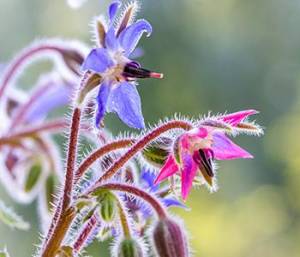 | 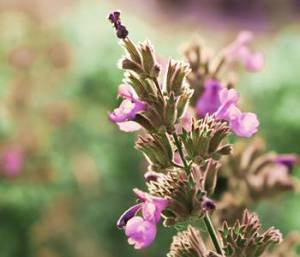 | 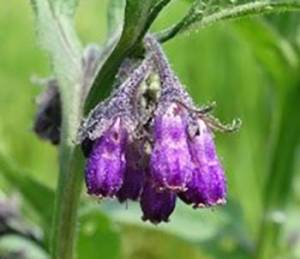 |
|
| Size | 60 cm | 30 to 60 cm | 1 meter |
| Leaves | Gray/silver to green; simple; alternate; ovate; hairy | Rosette; long and narrow | Green; large; hairy |
| Flowers | Blue; cyme; star-shaped | Blue; star to trumpet-shaped; cyme | Pink/purple/white; cyme |
| Stem | Erect; hollow; hairy | Erect; hollow; hairy | Erect; wrinkly; ovate |
| Scent | No distinctive aroma | Offensive odor | Foul smell |
Warnings And Cautions
Borage is unlikely safe for pregnant women. It may be safe for breastfeeding women and children but only at the discretion of a health professional.
Using borage supplements may interact with other medications. It is not advisable to take borage if you have a bleeding disorder, liver disease, and taking any medications. Borage will interact with liver medications, blood thinning drugs, and supplements containing gamma-linoleic acid.
Before taking any herbal supplements like borage, make sure to check your doctor for its safety and risks first.
You may also like:
 How To Make A Herbal Poultice For Joint Pain
How To Make A Herbal Poultice For Joint Pain
10 Spring Medicinal Plants My Grandmother Grew in Her Backyard (Video)
Homemade Ginger And Chickweed Poultice For Circulation And Sore Muscles
DIY Skin Soothing Chickweed and Vinegar Bath for Rashes
How to Make a Chaparral Salve for Wounds And Skin Infections

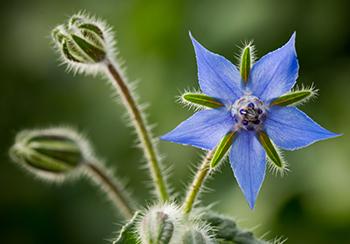
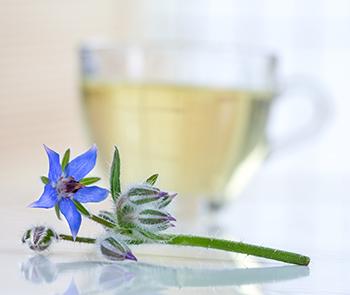
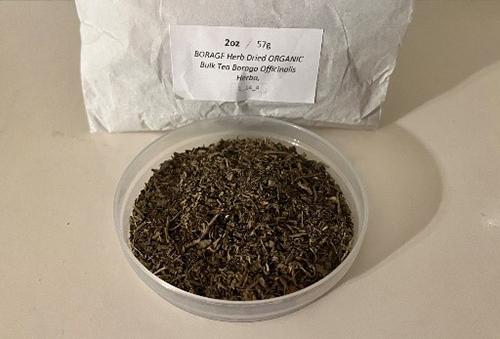
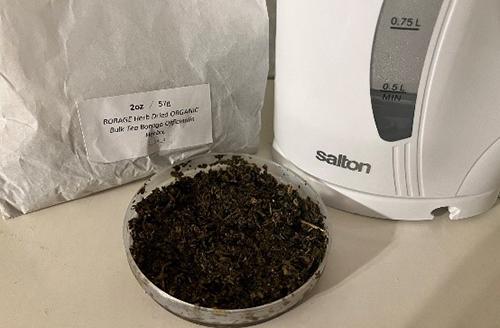
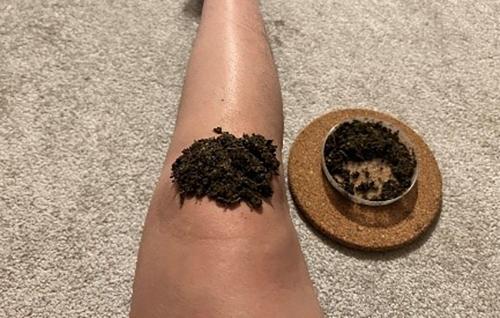
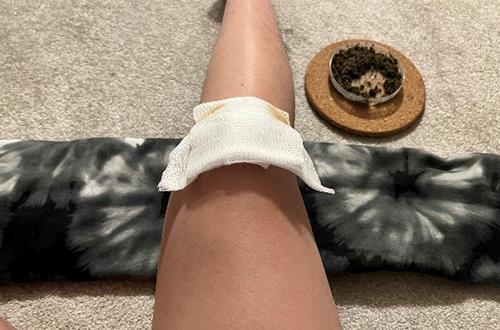
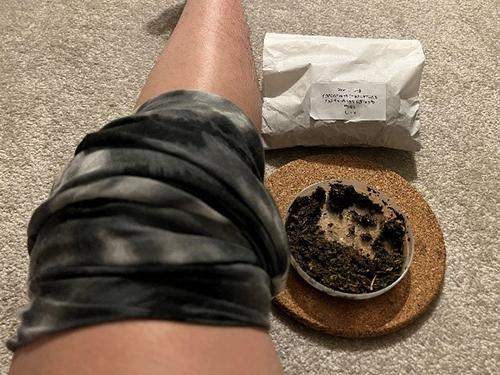
The plant’s seed oil contains gamma-linolenic acid, not gamma-linoleic.
She misspelled it 1 time. If you read the whole article, there was 1 misspelling. Not enough to have to have something to say about it
How does one use it to “cure” osteoporosis?
I was wondering that also. Thanks for asking the question.